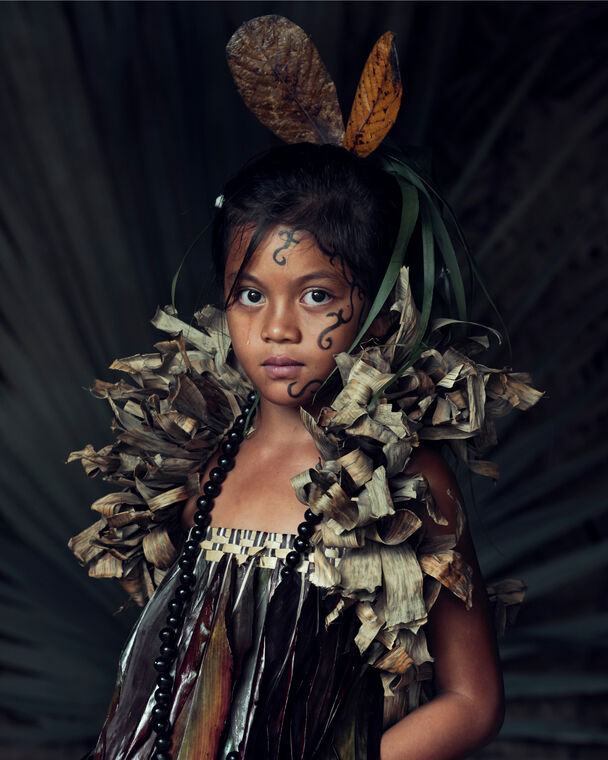The British photographer Jimmy Nelson was born in 1967. His father was a geologist for Shell, and by the time Jimmy was a toddler he’d lived in Africa, Asia, and South America. When he turned seven, he was uprooted from the family home in Nigeria and enrolled at Stonyhurst College, a serious-minded Jesuit boarding school in Lancashire, in North West England.
There was a lot of rain, not to mention drab school uniforms, Catholic Mass, and 1,000 other boys. Used to roaming the plains of Africa, Nelson didn’t adapt well. “I was marginalized from the beginning, and ostracized,” he told The New York Times in 2013. When he was 16, an allergic reaction to malaria medication led him to develop a condition called alopecia totalis. He lost his hair overnight. “Looking back,” he said, “it seems clear my fascination with appearance, what one looks like, with individual expression, with eccentricity, originates in wanting to be understood.”
Nelson’s hair never grew back. The minute he turned 17, in 1986, he left dreary England and flew to Tibet, where he planned on trekking through the country on foot. In the Himalayan peaks, he met groups of Tibetan monks whose bald heads gave him a sense of belonging. He stayed for two years, taking photographs with a small camera.

Nelson kept to the road until he was 24, trying his hand at photojournalism in Afghanistan, Kashmir, and Pakistan. As a side project, he photographed the tribespeople he met on the way. Journalism wasn’t his specialty, however, and he eventually married and switched to advertising.
In 2010, digital photography was on the rise. Nelson’s career was winding down, and he decided to photograph the people of 35 tribes in disparate countries—among them, the nomadic Chukchi, in northeast Siberia, and the Asaro, in Papua New Guinea. To do so, Nelson had to win the trust of these communities. In Siberia, he spent three weeks in cold encampments with the Chukchis before he was allowed to take a single photograph. The pictures he eventually took are eloquent portraits in which the subjects return the camera’s gaze. And Nelson’s eye for composition, and the vibrant color palettes, generate an energy that feels cinematic.
“Over time,” Nelson writes in his new book, Humanity, “I realized the power of my work in challenging stereotypes and dispelling misconceptions about Indigenous peoples.” Photographs of everyone from the Lopa people, in Nepal, to the Samburu peoples, in Kenya, populate its pages. Their feathered capes, tattoos, studded belts, and embroidered felt boots are the stuff of sheer splendor. —Elena Clavarino
Elena Clavarino is a Senior Editor at air mail











